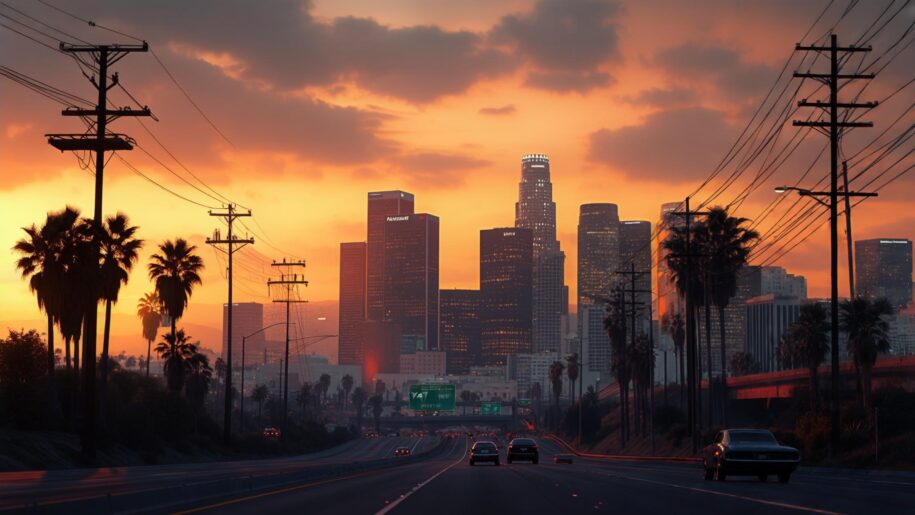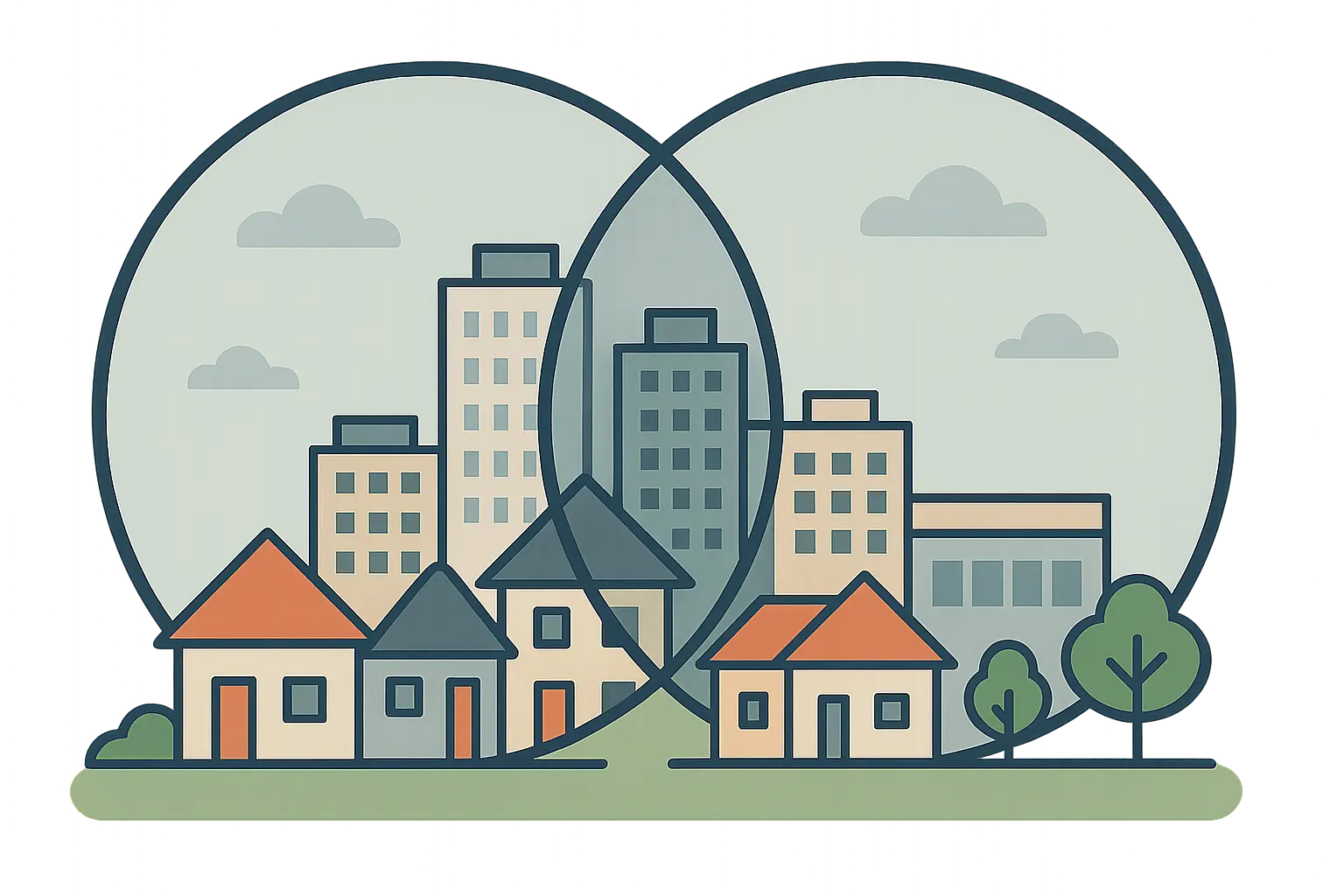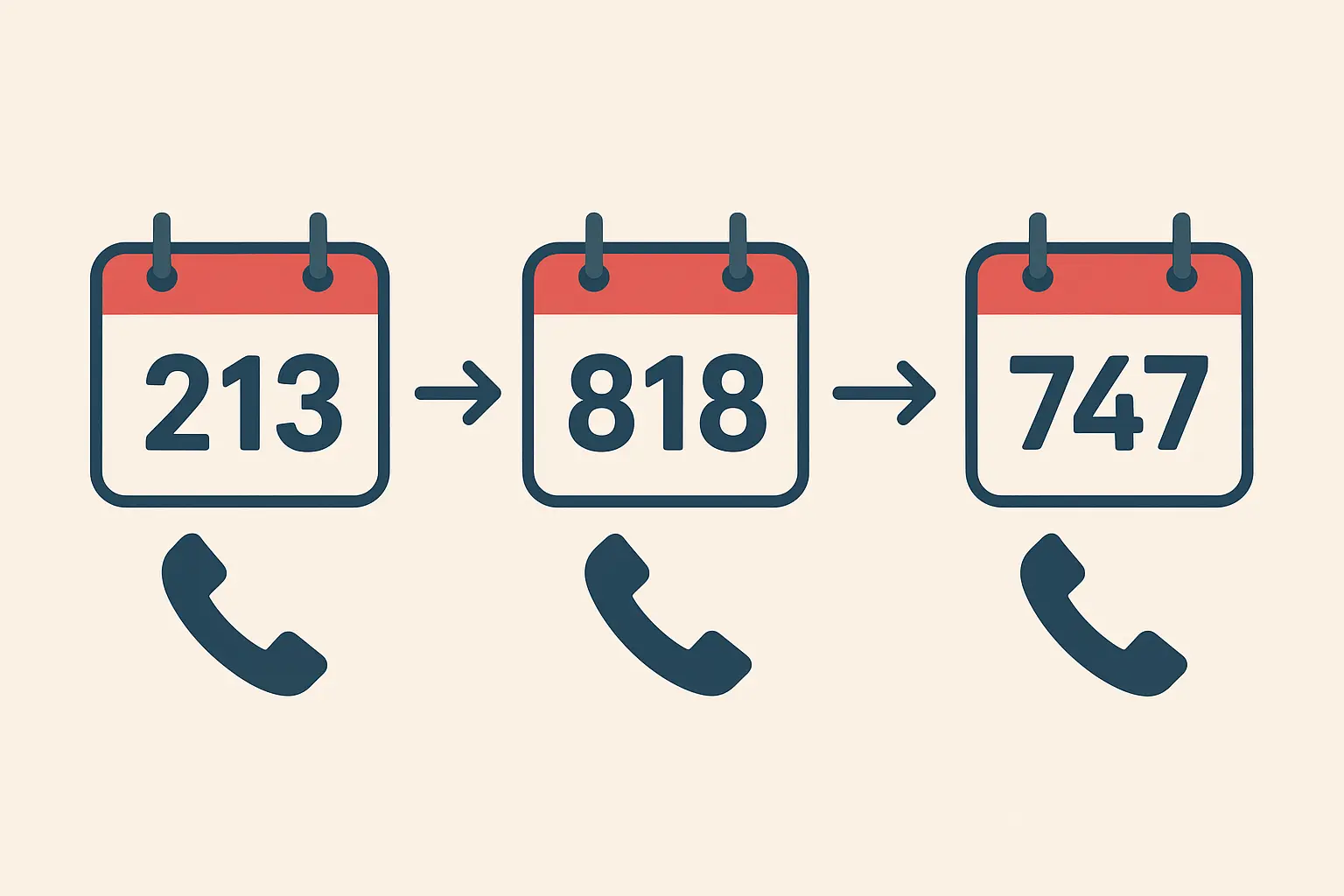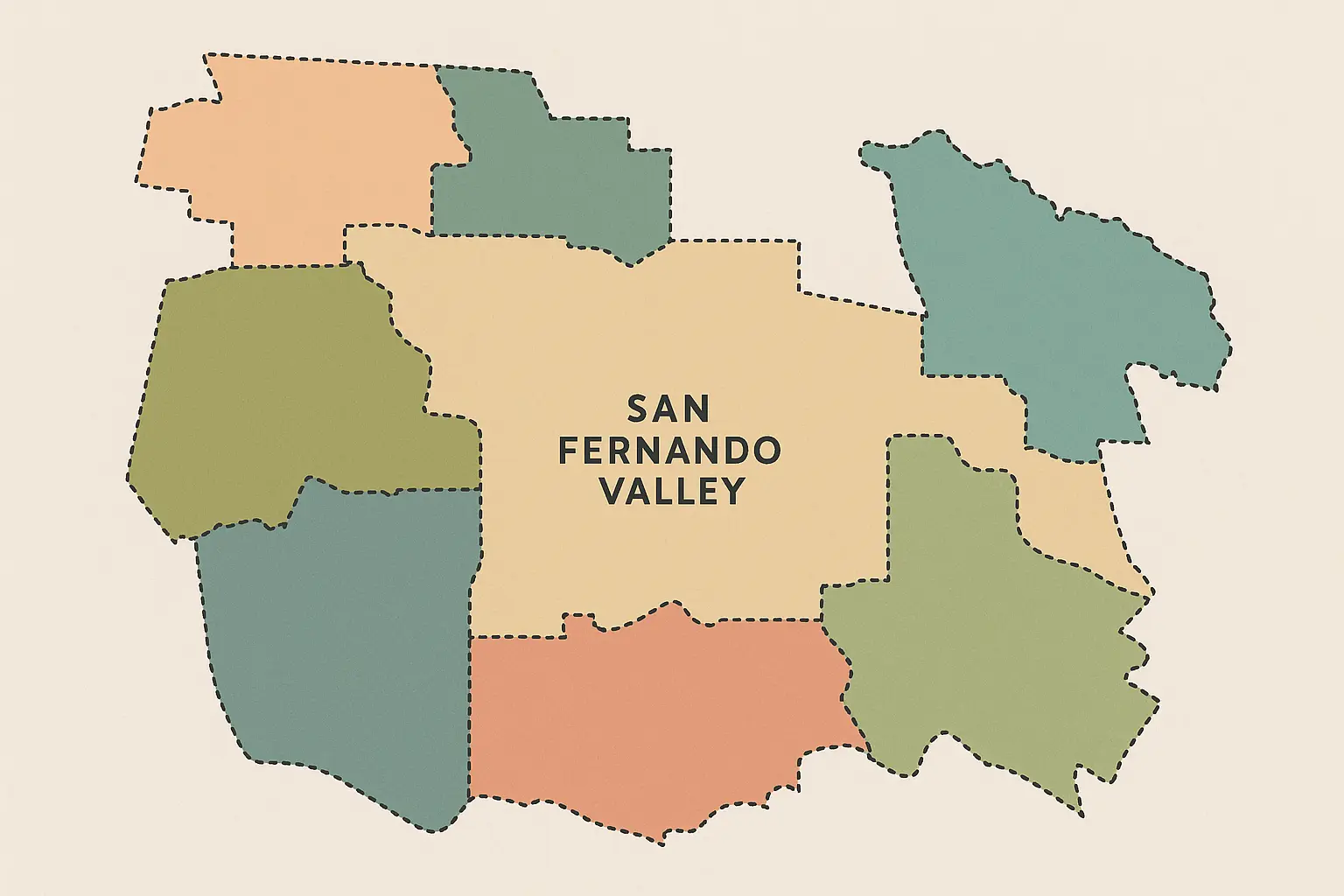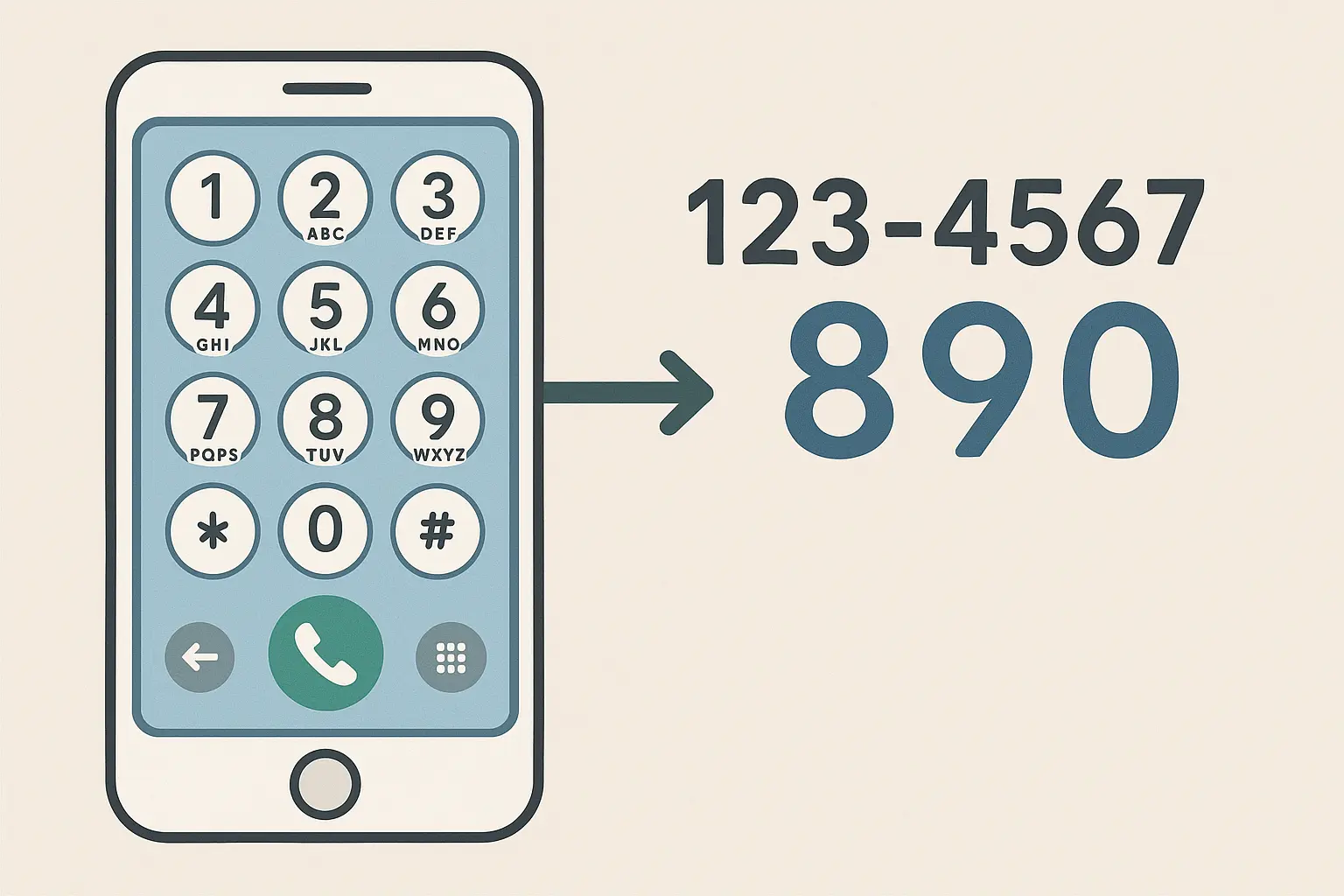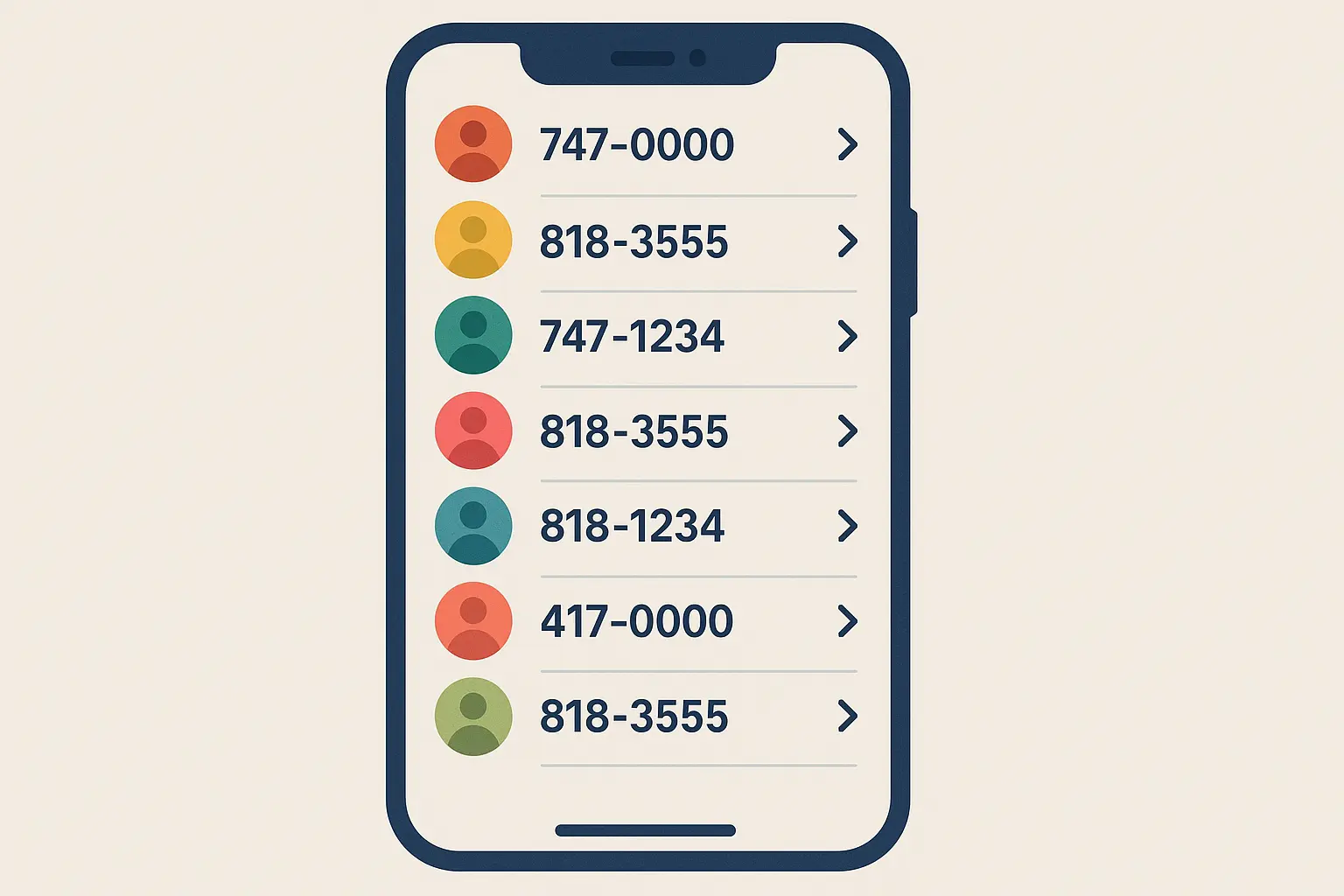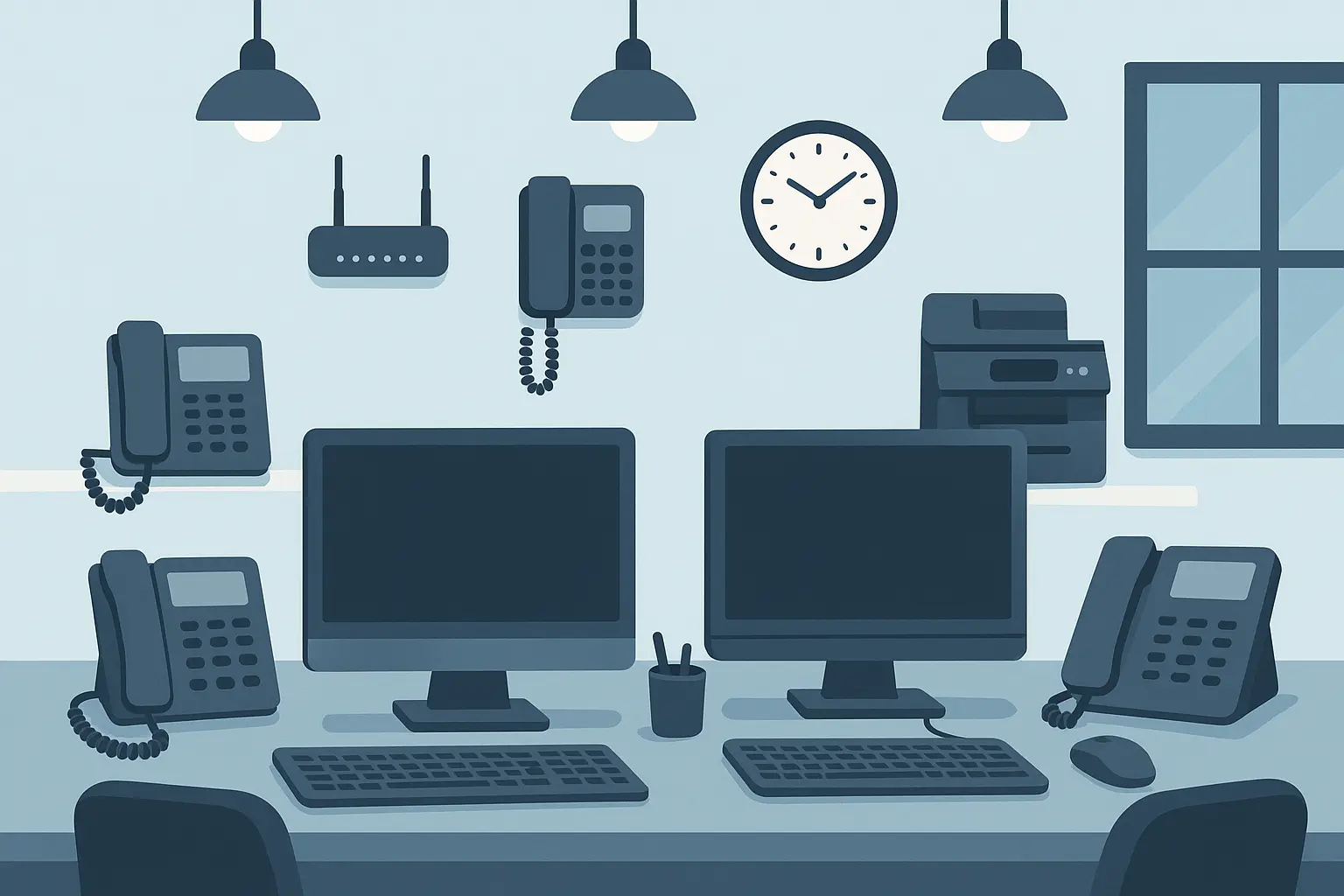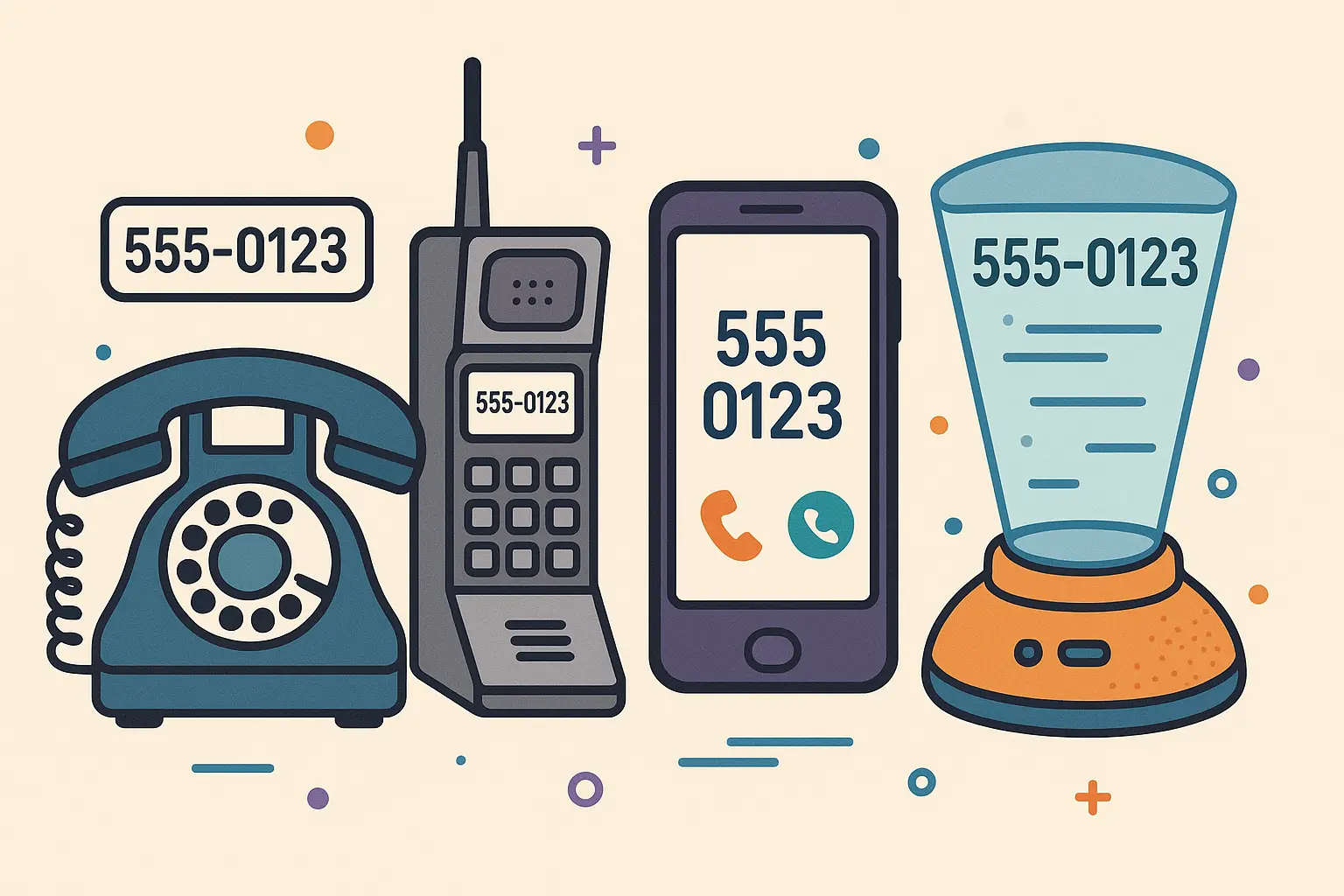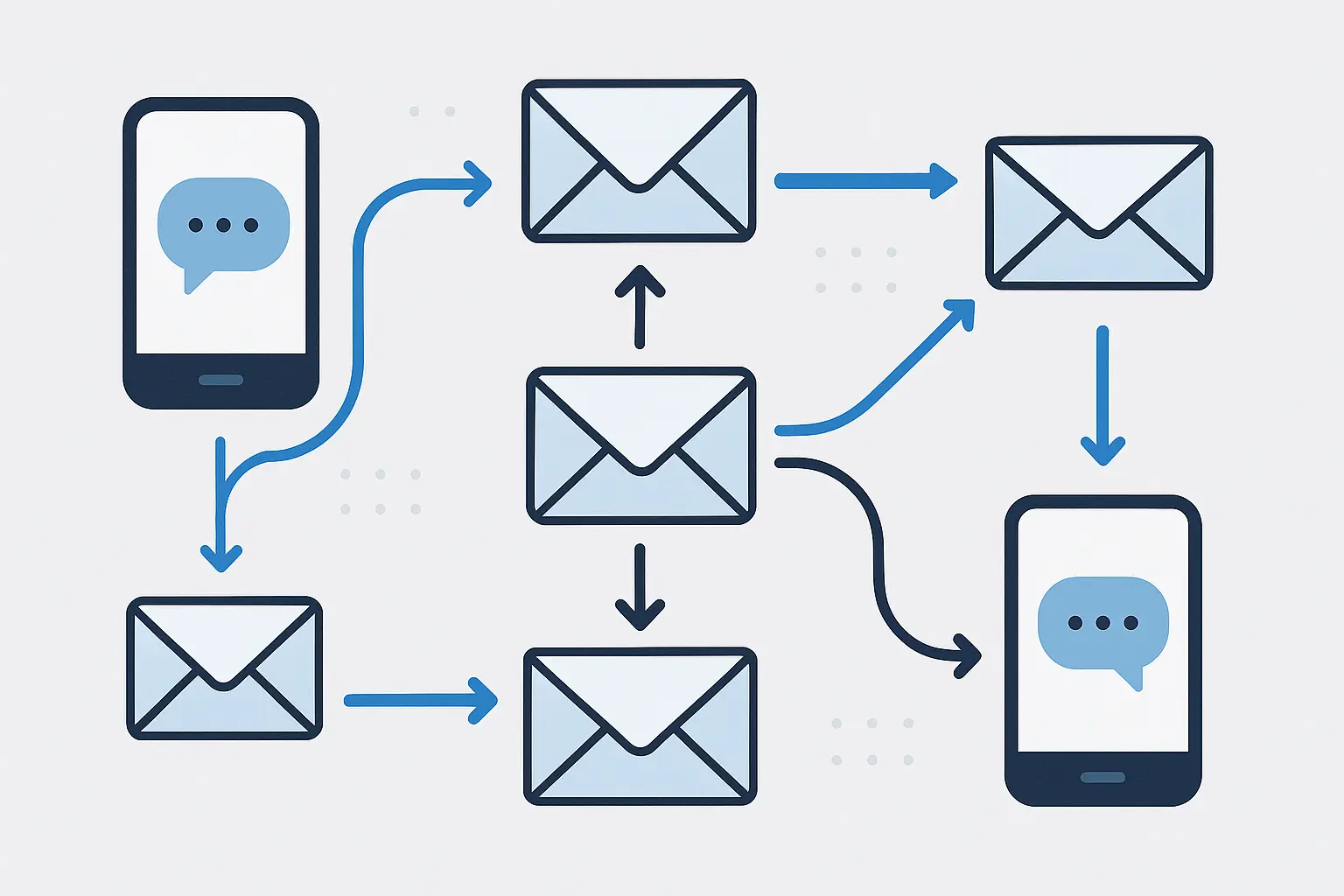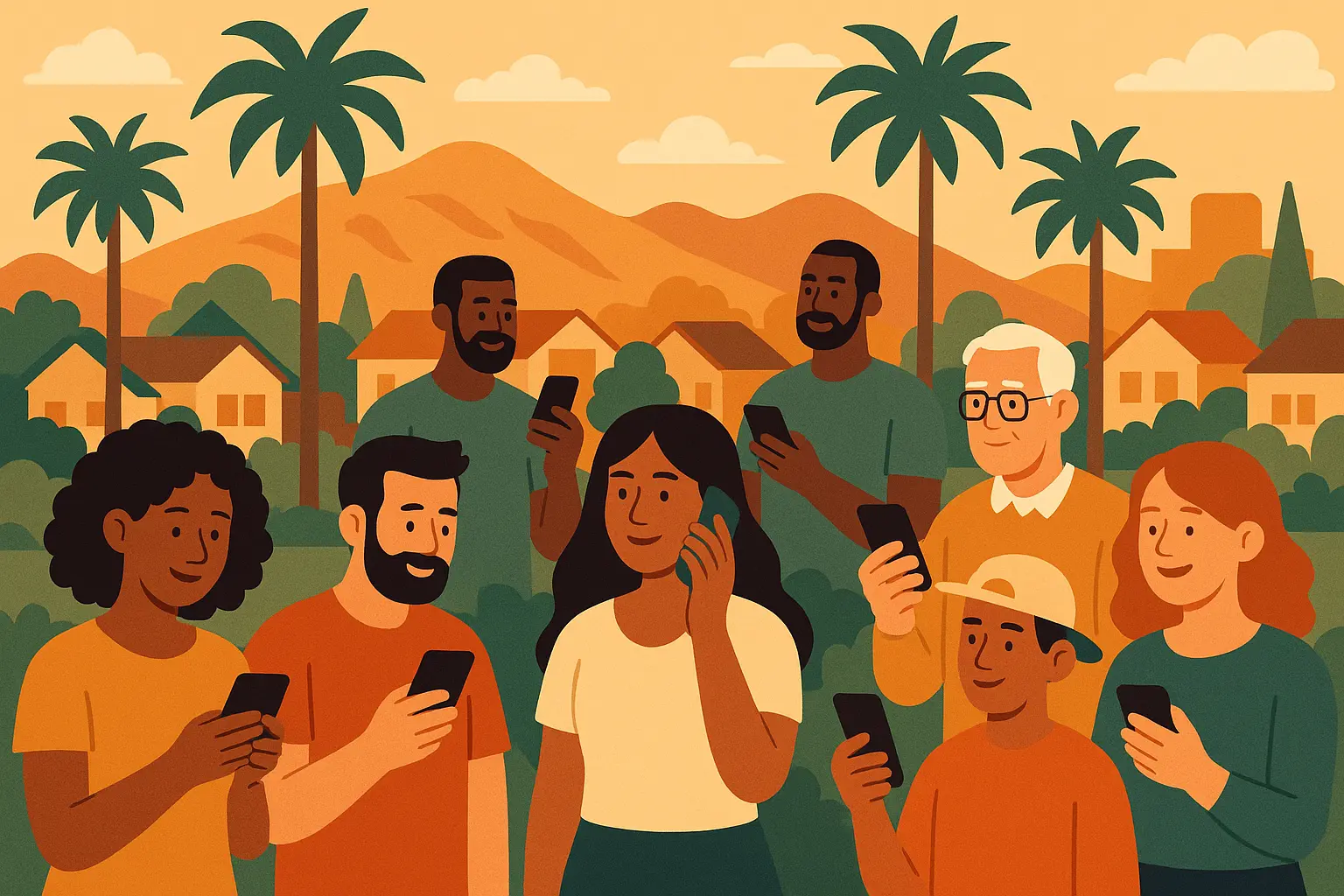Living in the San Fernando Valley, I’ve watched neighbors scratch their heads when they realize the house next door has a completely different area code. Same street, same zip code, but one family dials 818 while the other uses 747.
With about 735,000 people living in this dual-code region, there’s a fascinating story behind why we have two area codes serving identical neighborhoods. According to ZipAtlas demographic data, the total population of Area Code 747 is 734,515, making it one of the most densely populated overlay regions in California.
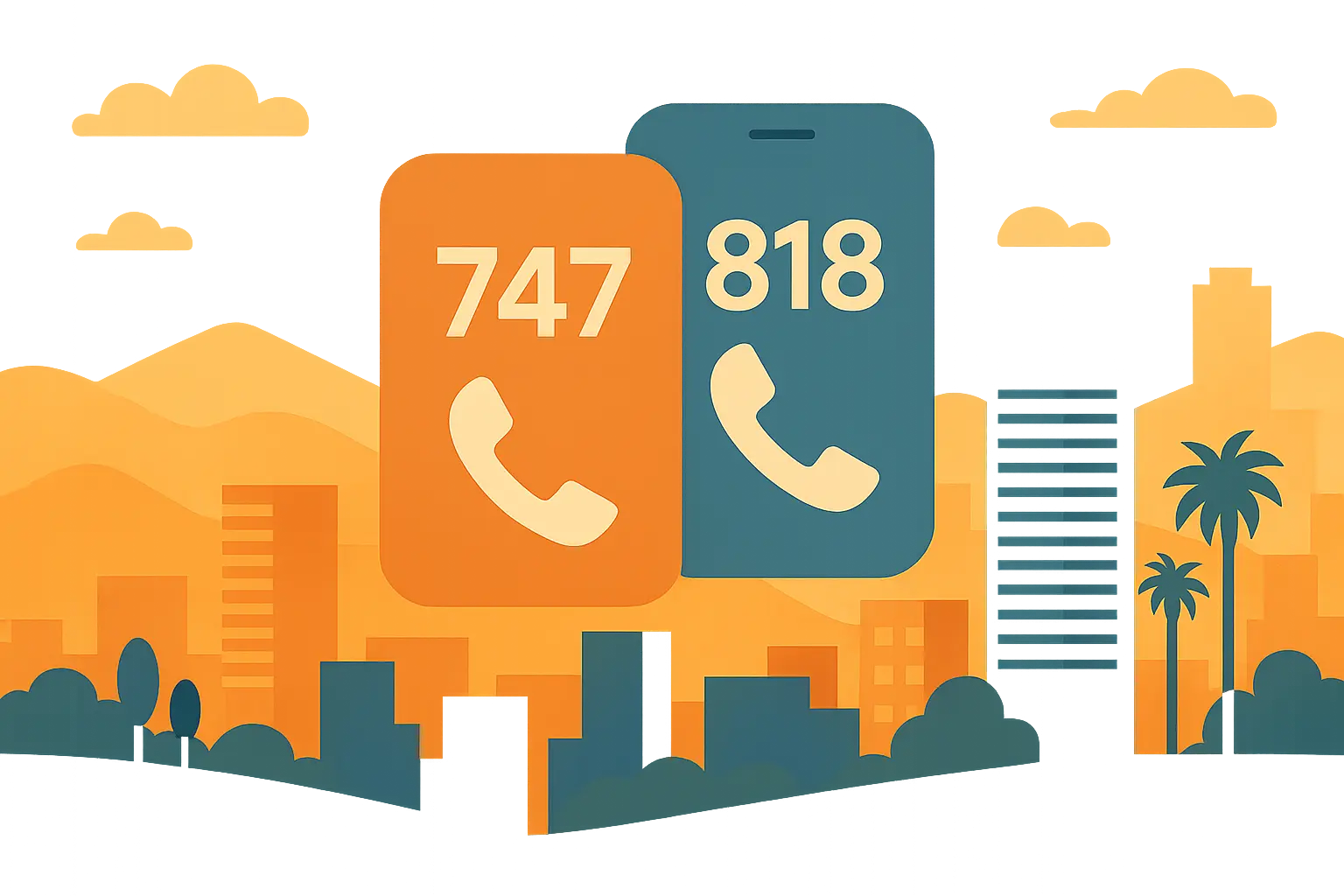
Table of Contents
Table of Contents
-
What Makes 747 Different from Every Other Area Code
-
The Real Story Behind 747’s Creation
-
Where Exactly Does 747 Cover (It’s More Complicated Than You Think)
-
How the Overlay System Actually Works
-
Why You’re Forced to Dial 10 Digits for Everything Now
-
Getting a New Phone Number: 747 vs 818
-
What This Means for Your Daily Life
-
Business Implications You Haven’t Considered
-
The Future of Valley Phone Numbers
-
Managing Communications Across Both Codes
TL;DR
-
747 is an overlay that serves the exact same geographic area as 818 in the San Fernando Valley
-
Both codes cover major cities like Burbank, Glendale, North Hollywood, Van Nuys, and Woodland Hills
-
You must dial 10 digits for all calls, even local ones, because of the dual-code system
-
New phone numbers can be assigned either code depending on availability and your carrier
-
There’s zero difference in service quality or features between the two
-
The overlay system was created to provide more phone numbers without forcing existing 818 users to change
-
Both codes connect to the same emergency services and local infrastructure
What Makes 747 Different from Every Other Area Code
Unlike normal area codes that have clear boundaries, 747 is an “overlay” – it shares the exact same territory as 818. Your neighbor might have 747 while you have 818, despite living on the same block.
When I explain this to people, they usually look confused because it breaks everything we think we know about phone numbers. Most area codes have distinct zones – cross a street and you’re in different territory. But 747 throws that rule out the window.
The Overlay Concept Explained
Instead of carving up the San Fernando Valley into separate zones, both 747 and 818 cover every single street and neighborhood. Two businesses on the same block in Burbank could have completely different area codes – the coffee shop might be (747) 555-0123 while the dry cleaner next door is (818) 555-4567. Both are local calls serving the same community.
This system was revolutionary because it solved the number shortage without the chaos of forcing people to change their established numbers. Back in the day, when regions ran out of numbers, they’d literally split areas in half. Can you imagine the disruption? Businesses reprinting everything, customers getting lost, families separated by different area codes despite living blocks apart.
For businesses managing communications across different regions, understanding how to forward text messages to an email address becomes crucial when area code changes affect customer contact methods.
Service Parity Between Both Codes
I’ve had both numbers over the years, and there’s absolutely no difference in service. Call quality, features, and coverage are identical regardless of which code you have. The phone companies treat them as completely interchangeable – it’s just a matter of which numbers happen to be available when you sign up.
The Real Story Behind 747’s Creation
By the late 1990s, 818 was running out of available phone numbers. The San Fernando Valley had exploded since 1984 when 818 was created, and we were facing a telecommunications crisis. The explosion of cell phones, fax machines, and dial-up internet created unprecedented demand for numbers.
Historical Context of 818
Before 818 existed, the entire valley was part of the massive 213 area code covering most of Los Angeles. The 1984 split gave us our own identity, but by the ’90s, we were consuming numbers faster than anyone anticipated.
The complexity of area code management has become even more relevant with recent issues. As reported in “The proposed Keep Call Centers in America Act of 2025” by CX Today, customer experience analyst Liz Miller noted: “Yesterday, I kept getting calls from a number with a 747 area code, which is local here in the San Fernando Valley. They called me four times.” This highlights how area codes can be spoofed by bad actors, making proper management even more critical.
Implementation Timeline and Process
The 747 overlay officially launched in 2009 after years of planning and regulatory approval. The process wasn’t rushed – it required coordination between the Federal Communications Commission, California Public Utilities Commission, and all major phone companies.
Before 747 went live, there was a massive public education campaign. Phone companies notified every customer multiple times, and public service announcements explained the changes. The most significant change was that everyone would have to start dialing 10 digits for all calls, even local ones.
Where Exactly Does 747 Cover (It’s More Complicated Than You Think)
The coverage area includes the entire San Fernando Valley – about 260 square miles of Los Angeles County. However, the boundaries aren’t as straightforward as you might expect, spanning multiple major cities and countless neighborhoods.
The demographic diversity is remarkable – according to ZipAtlas data, the most populous ancestries reported in Area Code 747 are Mexican (227,925 | 31.0%), Central American (71,485 | 9.7%), Armenian (44,334 | 6.0%), Salvadoran (41,987 | 5.7%), and Korean (39,521 | 5.4%), together accounting for 57.9% of all residents.
|
Major Cities in 747/818 Coverage |
Population |
Notable Features |
|---|---|---|
|
Burbank |
107,337 |
Entertainment studios, Bob Hope Airport |
|
Glendale |
196,543 |
Independent city, shopping districts |
|
San Fernando |
25,689 |
Historic valley city, government center |
|
Van Nuys |
136,443 |
Business district, transportation hub |
|
North Hollywood |
87,241 |
Arts district, NoHo Commons |
|
Woodland Hills |
67,006 |
Upscale residential, shopping centers |
Major Cities and Communities
Burbank is probably the most well-known city in our coverage area, home to major entertainment studios and Bob Hope Airport. Glendale, despite being its own incorporated city, falls within our region. San Fernando, the tiny city that gives the valley its name, is also included.
What gets confusing is that many areas aren’t actually separate cities – they’re unincorporated parts of Los Angeles. North Hollywood, Studio City, Sherman Oaks, and Encino are all technically part of LA, but they’re in our 818/747 region rather than the main LA area codes.
Understanding proper phone number formatting is essential for businesses operating in these diverse communities, which is why knowing the US phone number format with country code helps ensure clear communication with customers across all these municipalities.
Boundary Definitions and Edge Cases
The boundaries between our region and neighboring area codes can be surprisingly precise. Sometimes a single street marks the dividing line. Ventura Boulevard serves as a boundary in some areas – a restaurant on the north side might have 747 while a shop directly across the street could have 323, even though they’re only 50 feet apart.
Generally speaking, if your ZIP code starts with 913, 914, or 915, you’re probably in 747/818 territory. However, there are exceptions and overlaps, especially near boundaries, since postal and telephone systems don’t always align perfectly.
How the Overlay System Actually Works
The technical side is actually pretty elegant once you understand it. Both 747 and 818 are programmed into the same switching equipment, and the phone network treats them as part of the same local calling area. When you dial a number, the system doesn’t care which area code it is – it routes the call the same way.
Network Infrastructure Integration
All the cell towers, phone switches, and routing equipment in the valley handle both area codes identically. There’s no separate network for each code – it’s all one integrated system. This is why you don’t experience any difference in service quality.
When you make a call from 747 to 818 (or vice versa), the network processes it as local. The routing equipment recognizes both codes as serving the same geographic area, so you’re not charged long-distance rates.
Crucially, when you dial 911 from either number, you reach the same emergency dispatch centers. The system knows both area codes serve the same communities, so your call gets routed to appropriate local police, fire, and medical services based on your actual location, not your area code.
Mandatory 10-Digit Dialing Requirements
The biggest change for residents was having to dial all 10 digits for every call, even to your next-door neighbor. Before the overlay, you could dial just seven digits locally. Now, if you try dialing seven digits, you’ll get a recording telling you to hang up and try again with the area code.
This change particularly affects businesses managing customer communications efficiently, making solutions such as how to enter a phone number in international format increasingly important for proper contact management.
Checklist for 10-Digit Dialing:
-
✓ Always include area code (747 or 818)
-
✓ Dial 1 + area code + number for long distance
-
✓ Program contacts with full 10-digit numbers
-
✓ Update business cards and marketing materials
-
✓ Educate visitors about the requirement
-
✓ Check automatic dialing systems and fax machines
With two area codes serving the same region, the phone system can’t tell which you’re trying to reach when you dial just seven digits. If you dial 555-1234, are you trying to reach 747-555-1234 or 818-555-1234? The system has no way to know, so 10-digit dialing became mandatory.
Getting a New Phone Number: 747 vs 818
When you sign up for a new phone line in the valley, you might get either a 747 or 818 number. The assignment depends on several factors, including which carrier you choose and what numbers they have available in their inventory. You usually can’t specifically request one over the other, though some carriers might accommodate preferences if they have availability.
Carrier Assignment Practices
Different phone companies have different blocks of numbers assigned by regulatory authorities. Verizon might have more 818 numbers available while T-Mobile has more 747 numbers, or vice versa. The assignment is generally random from the customer’s perspective.
|
Carrier |
747 Availability |
818 Availability |
Special Requests |
|---|---|---|---|
|
Verizon |
Moderate |
High |
Sometimes accommodated |
|
AT&T |
High |
Low |
Rarely accommodated |
|
T-Mobile |
High |
Moderate |
Case-by-case basis |
|
Sprint |
Low |
High |
Not typically available |
|
Local Carriers |
Varies |
Varies |
More flexible |
There’s no systematic difference between how businesses and residential customers get assigned area codes. A business might get 747 while a residential customer signing up the same day gets 818. Phone companies don’t segregate assignments based on customer type.
If you switch carriers, you can usually keep your existing number regardless of whether it’s 747 or 818. Number portability rules apply equally to both area codes.
Consumer Preferences and Perceptions
Some people have strong preferences for one code over the other. I’ve met people who prefer 818 because it’s the “original” valley code, while others prefer 747 because it feels more modern. From a practical standpoint, these preferences don’t matter at all, but psychology plays a role.
This perception issue has even made it into popular culture. As “LA’s Most Exclusive Area Code 747” by NBC Los Angeles noted, “We take status symbols a long way in this town — right down to the area code. Oh, you’re a 747? That’s new LA.”
What This Means for Your Daily Life
Living with the dual system has become second nature for most valley residents, but it does create some unique situations. The biggest ongoing impact is mandatory 10-digit dialing, which still trips up visitors and newcomers who expect to dial just seven digits locally.
The economic impact on residents is significant – according to ZipAtlas data, the median household income in Area Code 747 is $93,695, reflecting the prosperous nature of the San Fernando Valley communities served by both area codes.
Communication Pattern Changes
The 10-digit requirement fundamentally changed how we make phone calls. Older residents had to retrain decades of muscle memory, while younger people who grew up with cell phones adapted more easily since they were already used to dialing full numbers.
Before the overlay, making a local call was simple – just seven digits. Now, every call requires the area code, which makes all calls feel a bit more formal, even when calling someone in the same neighborhood. It’s a small psychological shift, but it’s real.
People visiting the valley from other parts of the country often get confused when their seven-digit dialing attempts fail. Hotels and businesses have had to educate guests about the 10-digit requirement, and you’ll still see signs in some places reminding people to include the area code.
Technology Adaptation
Modern smartphones and contact management systems have made the transition easier than it would have been in earlier decades. Your phone automatically stores the full 10-digit number, so you don’t think about area codes when calling people from your contacts.
For businesses managing customer communications, understanding how to forward text messages on an Android phone becomes essential when dealing with messages from both 747 and 818 numbers.
A typical valley resident’s phone contacts might show: “Mom (818) 555-0123”, “Doctor (747) 555-4567”, “Pizza Place (818) 555-7890” – all treated as local numbers despite the different area codes.
Business Implications You Haven’t Considered
Running a business in the valley means dealing with some quirky situations. I’ve seen pizza places get confused calls from customers who assume they’re long-distance because of the different area codes. “Wait, you’re 747? I thought you were local!”
The truth is, both codes work exactly the same for businesses. Your customers don’t care if you’re 818 or 747 – they just want to reach you. The only real headache is making sure your phone system treats both as local calls, which most modern systems handle automatically.
Marketing and Branding Considerations
Some businesses have developed preferences for one area code over the other for branding reasons. A company might feel that 818 gives them more “authentic valley” credibility, while another might prefer 747 for its perceived modernity. Established businesses that have had 818 numbers for decades benefit from customer recognition and memorability. However, new businesses with 747 numbers don’t seem to face any disadvantage in customer acquisition or retention. Both area codes are equally recognized as local by valley residents.
Communication System Requirements
Business phone systems need to be configured to handle both area codes as local calls. This affects everything from call routing to billing systems. Companies also need to train their staff to always use 10-digit dialing when giving out phone numbers or making calls.
What Actually Matters for Businesses:
-
Train staff to always give out 10-digit numbers
-
Make sure your phone system recognizes both codes as local
-
Don’t overthink the marketing angle – customers really don’t care
Some established businesses with decades-old 818 numbers worry about switching carriers and losing their “authentic valley” credibility. Meanwhile, newer companies with 747 numbers function just fine. It’s mostly in our heads.
Business Communication Checklist:
-
✓ Configure PBX systems to recognize both codes as local
-
✓ Update automated dialers and customer databases
-
✓ Train staff on 10-digit dialing protocols
-
✓ Review call routing and forwarding rules
-
✓ Update marketing materials with full phone numbers
-
✓ Test emergency contact systems
The Future of Valley Phone Numbers
The 747 overlay bought us time – probably decades of it. We went from running out of numbers to having plenty of capacity for growth. Unless something dramatic changes in how we use phone numbers, we’re set for the foreseeable future.
Capacity Management and Growth Projections
The addition of 747 essentially doubled the available phone number capacity for the valley. Based on current usage patterns and growth projections, this should meet our needs for many years to come. However, unexpected technological changes could accelerate number consumption faster than anticipated.
The rise of VoIP services, internet-based phone systems, and various connected devices affects how phone numbers are used and assigned. Some technologies are more efficient with number usage, while others create new demands that weren’t anticipated when the overlay was planned.
Potential Future Changes
That said, technology keeps evolving. Who knows what new devices or services might start eating up phone numbers faster than expected? If we do run out again, they’ll probably just add another overlay rather than split the region. The current system works too well to abandon.
If we eventually exhaust both 747 and 818 numbers, the next step would likely be another overlay rather than a geographic split. The success of the current system makes it the preferred approach for managing number shortages without disrupting existing users.
Managing Communications Across Both Codes
For businesses handling customer messages from both area codes, the key is treating them identically. Whether a text comes from 747 or 818, it’s still a local customer who deserves the same response time and attention.
Managing business communications in areas with multiple area codes can be tricky, but Auto Forward SMS makes it seamless. When your business receives text messages from customers using either 747 or 818 numbers, our system can automatically route these messages to the appropriate team members’ email addresses based on sophisticated filtering rules you set up.
Smart Filtering for Valley Businesses
You can configure Auto Forward SMS to recognize both 747 and 818 numbers as local communications, ensuring consistent handling regardless of which area code your customers use. This is particularly valuable for businesses that want to prioritize local customer inquiries or route them to specific team members who handle valley-area accounts.
Getting started with this functionality is straightforward when you follow our comprehensive guide on getting started with AutoForward SMS for the first time, which walks you through setting up area code-specific filtering rules.
Modern communication tools make this easier by automatically recognizing both codes as local. The important thing is having systems that don’t get confused by the dual-code setup.
Our advanced filtering capabilities allow you to create specific forwarding rules based on area codes. For example, you could set up rules that forward all messages from 747 and 818 numbers to your local sales team, while messages from other area codes go to your general customer service queue. This helps maintain organized communication workflows even as the region’s telecommunications landscape continues to evolve.
Ready to streamline your business communications across multiple area codes? Try Auto Forward SMS today and see how easy it is to manage customer messages from both 747 and 818 numbers in one unified system.
Final Thoughts
The 747 overlay turned what could have been a massive disruption into a barely noticeable change. Sure, we all had to learn 10-digit dialing, and visitors still get confused, but it beats forcing half the valley to change their phone numbers.
What I find most interesting is how quickly it became invisible. Most people don’t even think about whether they’re calling 747 or 818 anymore – they just dial and connect. That’s exactly how good infrastructure should work: solving problems without creating new headaches.
The valley’s dual area code system has become a model for other regions facing similar challenges. Instead of disruptive splits, more places are choosing overlays. Our little corner of LA helped prove there’s a better way to manage America’s growing demand for phone numbers.
The success of the 747/818 overlay has influenced telecommunications planning across the country. Other regions facing similar number shortages have adopted the overlay model rather than forcing disruptive geographic splits. In that sense, our little corner of Los Angeles helped pioneer a more user-friendly approach to managing America’s phone system.
Whether your number starts with 747 or 818, you’re part of the same community. The area codes might be different, but we’re all neighbors in the San Fernando Valley. The numbers on your phone might be different, but we’re all part of the same vibrant, diverse community we call the San Fernando Valley.
